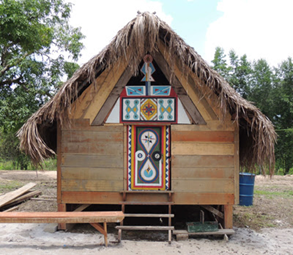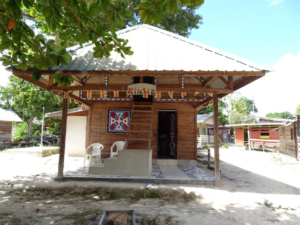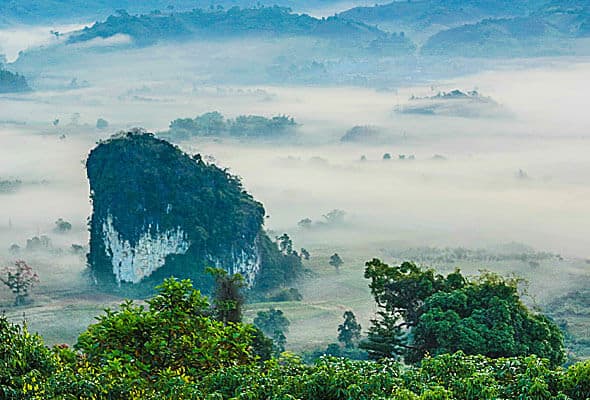RECENT PROJECTS


Diitabiki museum Fositen Gudu
In 2015, the Gaanman, the head of the Ndyuka, submitted a request to the Dutch National office for Cultural Heritage (RCE) to advise, support and guide in the preservation, management and making the cultural heritage of the Ndyuka more visible, particularly in Diitabiki and environs. After a identification mission of the RCE in Suriname and their advisory report in 2017 the Gaaman founded the Diitabiki Museum Foundation in Suriname. He then appealed to this foundation and Wooko Makandie in the Netherlands to help him build a museum to preserve the cultural heritage in Diitabiki.
Currently, the foundations are jointly actively working to make the museum ready for visitors. Thus, three buildings have already been restored in the old center of Diitabiki and one of them is already furnished in the traditional Nduyka manner. Also a start is made on landscaping the garden, which is called the park in Diitabiki and the realisation of a three route throughout Diitaniki is in progress. Furthermore bird research and an education program are in development. With these activities the Gaanman promotes knowledge transfer to the next generations, Ndyaka and other as well.
Ex-board member and founder of Wooko Makandie Thomas Polimé has made it his personal mission to complete this project successfully. Until this is accomplished he will continue to support Wooko Makandie in these activities as he is always been the Gaanman’s main contact in the Netherlands regarding this project.
Our dedicated project page (in Dutch)
Learn more about the Diitabiki Museum and it’s progress at the museum’s website, sponsored by the RCE.

Pangi
The pangi holds a very special place in within the Nduyka but also other Marron communities. The pangi is a long, rectangular cloth that women from the Marron community wrap around their waists to above their navels. But the pangi is more than just an object. It has a multifaceted meaning expressed in several rituals within the Ndyuka culture. These rituals are still honored by the community and were among other countries brought to the Netherlands from Suriname. Like at the gi pangi where girls turn into women by receiving their pangi form their peers. Undergoing these rituals and wearing the pangi is seen as something intrinsic and unique that belongs to the identity of the Ndyuka.
Due to our shared history this is just as well a Surinamese practise as a Dutch practise and therefore a practise that has to be preserved by Suriname an the Netherlands. That why our foundation has initiated to have the pangi designated as Dutch immaterial cultural heritage. You can now find the pangi among other significant practises at the list of the Knowledge Center Immaterial Heritage Netherlands: De Pangi - Immaterieel Erfgoed.
Our board member Megaidi Pinas-Pieroelie shares her story about her initiation at her Gi Pangi.

Photo Exposition
In 2021 we had the honour to access the photo collection of the National Archive and Utrechts Archive consisting of photo’s and video’s from the 50’s and 60’s on which images out of the Surinamese-Marron community is captured. This are pictures out of many different collections. Among others, the collection of biologist professor Con Bruning of the Evangelical Fraternity who in 1952 captured different Marron communities, among others the Ndyuka, in the inlands of Suriname. Together with the archives our foundation selected a small collection and finally made these photo’s accessible to the crowd. We made sure the descriptions of the photo’s had the voice of the community at heart. Under the name “Hidden colonial heritage, returned to the people” we made a photo-exposition in the Utrechts Archive. Where a variety of descendants and others interested parties visited the expo. During these visits we made good use of the crowd by capturing the stories behind the photo’s through crowdsourcing. The exposition has now, as intended, turned into a true traveling exposition. Other then the Utrechts Archive, the expo had also been at the Wi Eegi Kirki in Amsterdam, the Hernhutters House Museum, the BOL.COM headquarters and now at the National Archive in Surinam. The exposition will have it’s final destination at the Diitabiki Museum Fositen gudu.
